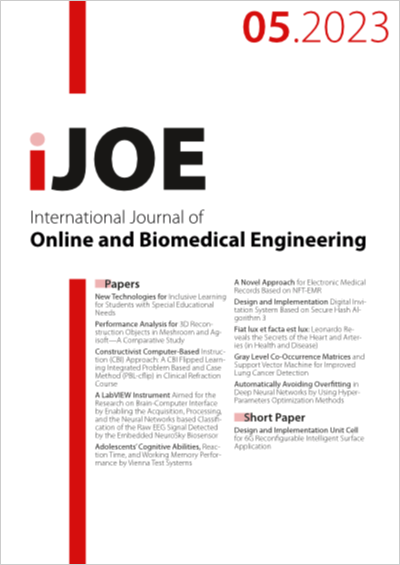Performance Analysis for 3D Reconstruction Objects in Meshroom and Agisoft—A Comparative Study
DOI:
https://doi.org/10.3991/ijoe.v19i05.37257Keywords:
Photogrammetry, 3D reconstruction, Meshroom, MeshLab, Size accuracy, Small objects, Time analysisAbstract
3D reconstruction of objects is with interest nowadays, mainly in production industry. The main challenge of them is accuracy and processing time, especially for small and detailed objects. The field of photogrammetry realizes the 3D reconstruction of objects through 2D photos. Different software, free or non-free exists, providing different quality and performance. Accurate 3D reconstruction is important in cloning objects, especially in the industry of spare parts or in the production of prostheses in medicine, etc. Determining accurately the sizes of the object, especially those with complex geometric shapes is very important in the 3D printing process.
The purpose of this paper is the analysis of the performance of 3D reconstruction in terms of accuracy for objects of different sizes regarding the number of its photos and the time evaluation of this process. The 3D reconstruction will be performed by free software Meshroom, measurement will be done in MeshLab and non-free software Agisoft. Experimental results show that quality and performance of 3D reconstruction depends on the number of photos of the object, concluding in finding the optimal balance between these parameters. By comparing obtained results from MeshRoom and Meshlag versus Agisoft, it is claimed that Agisoft performs better than MeshRoom. It offers more optimization techniques, reduces processing time, more visual quality in the reconstructed 3D object as well as more accuracy in measurement.
Downloads
Published
How to Cite
Issue
Section
License
Copyright (c) 2023 Indrit Enesi, Anduel Kuqi

This work is licensed under a Creative Commons Attribution 4.0 International License.



